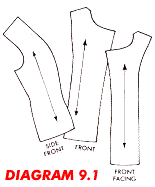Douglass H. Morse, Behavioral Mechanisms in Ecology, Harvard University Press, 1980
THREE WAYS IN WHICH THE TEN MOVES FOLLOWING PREY CAPTURE BY A THRUSH MAY COVER THREE-QUARTERS OF THE BEELINE DISTANCE COVERED BY THE TEN MOVES PRECEDING CAPTURE OF A PREY ITEM.
If individuals are able to recognize areas that offer particularly good foraging, they should develop ways to continue exploiting them as long as they remain profitable. Smith (1974a, b) demonstrated that European blackbirds (Turdus merula) and song thrushes (T. philomelos) show a strong tendency to concentrate their efforts near the area of initial capture, an effective technique for clumped prey.

